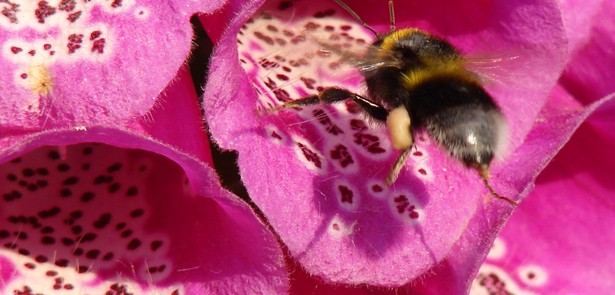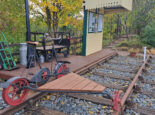Peterborough Museum Gardens

Most Peterborough residents are familiar with Peterborough Museum and its imposing Georgian façade; once the city’s first hospital, it was converted from a grand private residence which was in turn built on the foundations of a Tudor house. But few may be aware that, tucked behind it, is a beautiful, tranquil garden – now lovingly restored to reflect the site’s fascinating 450-year history
When the decision was made in 2012 to bring the Museum’s garden back to life, it didn’t look like a terribly promising prospect. ‘The team were faced with a disused area tucked between two wings of the modern building,’ explains Vivacity’s Volunteer Development Manager Gill Benedikz. ‘The ground was neglected with a very compacted surface, which probably dates from when the building became a hospital in Victorian times.’ The challenge was to create a low maintenance, accessible garden that enhanced the story of the building and which also encouraged wildlife – a project born out of a partnership between Peterborough Museum and Froglife, a national wildlife charity based in Peterborough. And so the components of the revived garden came together: a raised bed for a Victory Garden, four wooden planters for medicinal herbs reflecting different eras of the building’s life, a wildlife garden, seating and a shed. Once completed, the garden was handed over to the Museum and has been maintained by Vivacity volunteers ever since.
The Wildlife Garden
The wildlife garden contains as many native species as space and aspect allow, together with certain non-native species which also attract birds and insects. Herbaceous plants such as meadowsweet, angelica, lungwort, musk mallow and Gladwyn iris fill the space in front of the shrubs around the tree. ‘An important consideration in designing the planting was to make the view from the Museum windows as green and pleasant as possible at all seasons of the year,’ says volunteer Annie Birchenough. The berries of holly and various cotoneasters combine with those of rowan, Gladwyn iris, snowdrops and crocuses to give visual interest and to provide food for wildlife.
The Victory Garden
At the beginning of the Second World War the government started a campaign to encourage people to produce their own food, as it was assumed there would be shortages. Gardens, parks and sports fields were turned into allotments to grow vegetables and keep chickens, rabbits, goats and pigs. People were encouraged to ‘Dig for Victory’, hence the name: Victory Garden. ‘The soil in the Victory Garden was shallow and on top of compacted matter, making vegetable growing difficult,’ explains Annie. ‘So, the height of the surrounding border was raised using recycled wood and nails, in keeping with what would have happened during wartime – as well as adding the modern advantage of making the garden more accessible to disabled visitors and volunteers.’ The choice of vegetables reflects what would have been planted during the war. ‘Recent crops which have been grown successfully include potatoes, parsnips, carrots, broad and runner beans, tomatoes, leeks, marrows, lettuces and onions. Less successful were the cabbages, cauliflowers and Brussels sprouts due to the greedy nature of the caterpillars!’
The Herb Planters
The four herb planters each represent different eras – Tudor, Georgian, Victorian and 20th Century. In the Tudor planter you will find feverfew to treat headaches and parsley – rich in vitamin C and iron and often used to treat stomach upsets. Georgian times saw an almost total remodelling of the site resulting in the building we have today. ‘The volunteers focused on what the Georgians were learning about the workings of the human body. Foxgloves, for example, were found to contain digitalis and used to treat heart conditions, a refined form of which is still in use today.’ By the Victorian era the building had ceased to be a house and became the hospital. ‘Here the planter tries to represent in plants the huge advances in diagnosis and treatments. Herbal medicine was popular. Mint tisanes eased digestive problems and lavender was used by Queen Victoria as a deodorant and disinfectant.’
The final planter reflects the early 20th Century whilst the building was still a hospital. ‘In the early 20th century herbs were in great demand to treat those wounded in war to help prevent infection of wounds and gangrene. Garlic has great antiseptic properties, as does thyme. Marigolds were important for wound dressings but the petals from the Museum garden are now part of the recipe for making delicious scones! Later that century the building became the Museum and to reflect the great cup of coffee you can buy in Squires you will find chicory, which was sometimes dried, roasted and ground as a substitute for coffee.’ All of this has been achieved by the hard work of volunteers. ‘Peterborough is incredibly lucky to have such fantastic heritage sites and such a fantastic team of volunteers who care for them,’ says Gill.
If you want to find out more and get involved please contact or call 01733 864775 in the first instance. ● The Garden is open to the public every Saturday from April to September and access is by the gate in Trinity Street which runs along the side of the museum.















